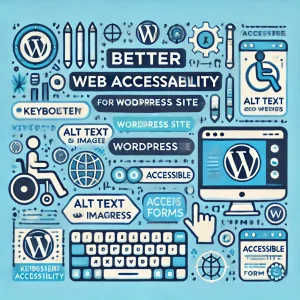 Not every small business has a website; and perhaps there are some types of businesses that might not require a website, but the rule of thumb remains – if you have a business it is a good idea to have website to help potential customers learn about your business and also most easily look your business up. The internet certainly is the new ‘yellow pages’.
Not every small business has a website; and perhaps there are some types of businesses that might not require a website, but the rule of thumb remains – if you have a business it is a good idea to have website to help potential customers learn about your business and also most easily look your business up. The internet certainly is the new ‘yellow pages’.
We presume you haven’t made that mistake, lol. But beyond that… if your business does compete for attention on the web alongside other businesses, how well does your website ‘rank’ on search engines, and hold your viewer’s attention? Simply speaking many small businesses have websites that are much less effective than others.
Many businesses, usually small ones, make the same mistakes. Below we list the most common mistakes;
Does your website have a clearly defined call to action?
Let’s review your website. If you can, pretend that you are coming to your website for the very first time. Well, that is impossible, but the point is, a new visitor will be seeing your site for the very first time, so it is important to lead them along to what you would ultimately like them to do, which is to become your customer.
Many small business websites are fine with letting visitors wander around rather aimlessly perhaps until they wander away and most likely never to return. About 1/3rd of websites are designed fairly well, and the rest could use some help in this regard.
Keep in mind cluttered website design, or one with poor navigation, is the most effective technique to encourage your visitors to click off your website as quickly as possible. Your small business will best be served by a simple, easy to read, easy to navigate, and clean website design.
It is also of high importance to guide your website visitors by expressing to them what you want them to do. Every page of your website should have a specific purpose and desired response. The layout, text, and chosen graphics should work together in synergy to produce the desired response. Work towards that goal. It is important to get opinions from your friends and family. Most everything done well wasn’t completed in one pass. It’s a good idea to revise your site a couple of times, after taking a break of a couple days in between, before evolving your design again.
Also, it’s important to keep your site “up to date”. Do not leave your site in a state of abandonment. It is perhaps best to not affix a date to your publications. Things like offers that have expired need to be removed when they expire. A regularly updated blog is a great reason for people to keep coming back.
Is your site mobile friendly?
The world has already ‘mobilized’.
Just a couple of years ago, most people surfed websites with a desktop or laptop computer. But times again have quickly changed. In 2015 and beyond just as many will visit your website with a tablet, albeit it an android or apple, tablet or smart phone. That’s pretty much stating the obvious.
If you haven’t made any website updates due to this massive trend, it is a good enough reason to go back to the drawing board. New website design technologies such as HTML5 are what most leading websites are designed with today; although it is not needed. Most mobile device browsers today are quick and efficient at zooming and panning. However, your visitors will appreciate a site that was designed with their small screen in mind. Today, only about 10-20% of websites are truly mobile compatible. This is another way to potentially surpass your competition.
Also keep in mind that Google considers mobile compatibility seriously enough that Google will likely demote your site in search results if your are not yet on the mobile bandwagon. In the world of the web, and as Google has become a dominant force, it is good to be as trendy as possible as the times change. If you are not sure, Google has on online an online mobile-friendly checking tool to see how they see your site.
And lastly it should be stated – avoid flash in your website design. It is usually not compatible with most smart-phones and tablets for various reasons. Visitors on your website may be greeted by an error message or blank screen if you use flash animations.
How “Social” is your site?
Another major trend is that social media companies Twitter, Facebook, and Pinterest have become popular all around the world. They have the masses captivated. It is impossible to ignore their influence.
There is still some debate about the future ramifications of social media marketing for businesses, but logically, if most people’s attention is focused on social media, that is where bulk of the market is. But still 3 of 5 small business websites haven’t yet updated to link to their personal or business social media accounts.
Otherwise the usual remaining options to consider are: business directories, online or traditional display advertising, PPC (“pay per click” ie. Google AdWords) advertising, SEO (Search-Engine-Optimization) etc.
Is your hosting provider reliable with good customer support?
You should be satisfied that your hosting company is as reliable as you wish them to be, near perfect. This means you should check your site every once in a while. If your site is down more than once during your periodic checks, it is probably worth transferring to a reliable webhost. Of course we recommend our own most reliable services here at 4GoodHosting.
Summary
The bottom line is that your small business website there to make money. To maximize that it should be made to help people easily find you (seo – search engine optimization), be compliant with the most coming browsers and screen sizes, captivate and hold your visitors’ attention, and then finally convince them to follow your call to action… to contact you or directly order your service or product offering through your website. Our best wishes for your future business success.














